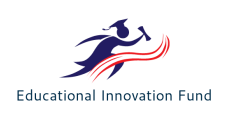As the US monetary framework is blossoming, the imbalance carries on to ascend among rich and poor, and correlatively, between the experimentally balanced classes and the innovatively disappointed.
About 21 percent of America’s kids live at or beneath the neediness edge. We should hold them up over the span of open and private methods, for when we bear their damage, we chance both their fates and our own. There is an answer close enough that could connect the partition: financing their help through a generally steady and undiscovered asset – the Initial Public Offering (IPO) – by methods for an additional “documenting expense.”
We propose making a progression of seriously oversaw venture reserves called the IPO-Funded Educational Trusts (IFETs). The IFETs would put resources into the financial exchange and assurance a “social legacy” for poor kids. They would be an open trust secretly oversaw.
Here’s the means by which it would work: Companies would dispense .025 percent of the cash from every IPO to IFET. The reserve would be overseen secretly, and would be directed by a model and pivoting leading group of private and open counsels. Assets would contend dependent on execution, making a serious commercial center for their administration.
The returns would be regulated by the Department of Education. In this way, IFETs would work as K-12 endowments for a prospering instructive development: the contract school or its neighborhood equal. With ensured subsidizing for understudies who are at the neediness line, both the schools and their understudies would stand a far more prominent possibility of scholastic accomplishment than they do now.
The IFETs would mediate in the question about open dollars subsidizing tuition based schools. Rather, open dollars would support state funded schools intended to achieve an open need: the genuine instruction of America’s least-favored kids.
Initial public offerings is indispensable in circulating assets in advertise economies. They fuel the pioneering motors of American flourishing. Somewhere in the range of 1977 and 1998, IPOs created normal returns of 11.5 percent over the initial a month after the contribution, and numbered very nearly 37 every month. In a similar period, IPOs raised a normal of about $20.5 billion every year, with a high of $57.4 billion out of 1993 and low of $221.6 million of every 1977.
Given the yearly normal of $20.5 billion somewhere in the range of 1977 and 1998, our proposition would have produced $1.13 billion when reinvested somewhere in the range of 1977 and 1998. These measurements are noteworthy. At the point when billions of dollars are isolated among the 9.6 million qualified school-matured youngsters, the potential for change is faltering.
The IFET program would be a purposeful blend of people in general and private areas, a unique we feel will be increasingly articulated in the 21st century.
The prompt recipients would be individuals most out of luck. Yet, society in general – including the companies – would profit. The outcomes would induce more prominent intensity and amicability for our country. It’s a positive figuring if at any time there was one – an incredible long haul venture.
At long last, IFETs act in a way nonsensical to the by and by charge based social-dynamic instruction framework. Rather than an apparent punishment against a substance for creating riches, the IFETs would be riches in itself. Where tax assessment empowers subtle moves and inventive bookkeeping, IFETs just spot another financial specialist at the table – the youthful. With enterprises as trustees for this youthful financial specialist populace, the IFETs use their stake to guarantee substantive training.
IFETs can be seen as either a corrective reaction to the gross imbalance of our country or an agreed demonstration of down to earth strategic investing.
It’s a suitable thought for a country that undeniably grasps private answers for open predicaments, yet one that requires and regards a specific measure of open organization. Something that mirrors the obligation we owe to our most prominent open great, youngsters, and to the most distraught among them. Something that mirrors the value we accept ought to inhere in any open products analytics – that is, something that is a mutual duty.



